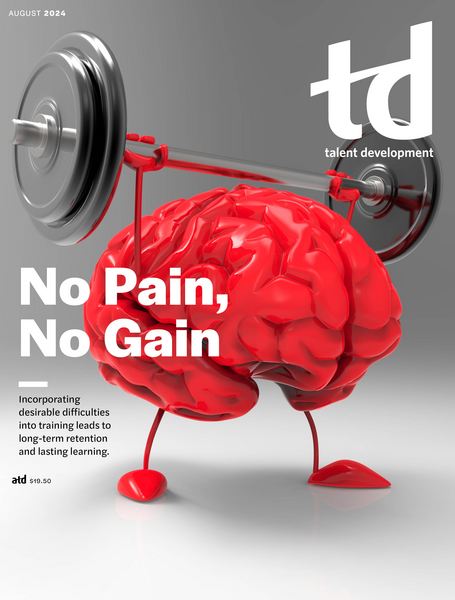TD Magazine Article
A Better Way to Work
Manual processes decrease productivity.
Thu Aug 01 2024

Almost a quarter of professionals across the world think inconsistent processes and frameworks affect their efforts to roll out new people development strategies, according to The People Development Balancing Act from SaaS company eloomi. Twenty-three percent of 1,500 business professionals—whose roles include senior leadership, heads of HR, L&D leads, and frontline employees—said too many manual processes are still in place at their organizations, which is having an impact on effective development programs. Respondents include professionals from companies in the US, the UK, Denmark, Norway, Finland, and Sweden.
"Without streamlined and cohesive people development strategies, organizations risk employee disengagement and decreased productivity," says Andrew Mina, senior L&D specialist at eloomi. "The findings from this report show that over half of employees still receive critical information via paperwork forms, highlighting a need for improved transparency and accessibility in communication."
A lack of online systems has led to low engagement, with business leaders saying the number 1 barrier preventing people development programs from being more effective is a lack of engagement from both managers and employees. To that point, less than half of senior leaders believe their company's HR teams are "very effective" in supporting organizational strategic goals.
"To address these issues, companies need to embrace digital solutions that automate and centralize HR processes," Mina explains. "Integrated systems offering comprehensive analytics and data visibility enable HR professionals to make informed decisions and track progress effectively."
But efforts to digitize and use comprehensive analytics aren't prevalent; 44 percent of respondents stated they receive information via paper forms. Further, according to The People Development Balancing Act, although 72 percent of respondents said they use various tools to track employees' development progress as part of a broader HR system, only 38 percent have access to analytics and data.
One hindrance to development efforts is the disconnect between employees and senior leadership. For instance, the report reveals a correlation between here-and-now activity and long-term performance that causes tension. If managers only focus on the short term, they can overlook what will contribute to employee and business growth in the long term. Getting rid of that lapse may require future-forward solutions.
"Investing in modern technologies also fosters a culture of continuous improvement," Mina says. "By leveraging user-friendly platforms, HR teams can enhance operational efficiency and elevate the overall employee experience."
You've Reached ATD Member-only Content
Become an ATD member to continue
Already a member?Sign In

